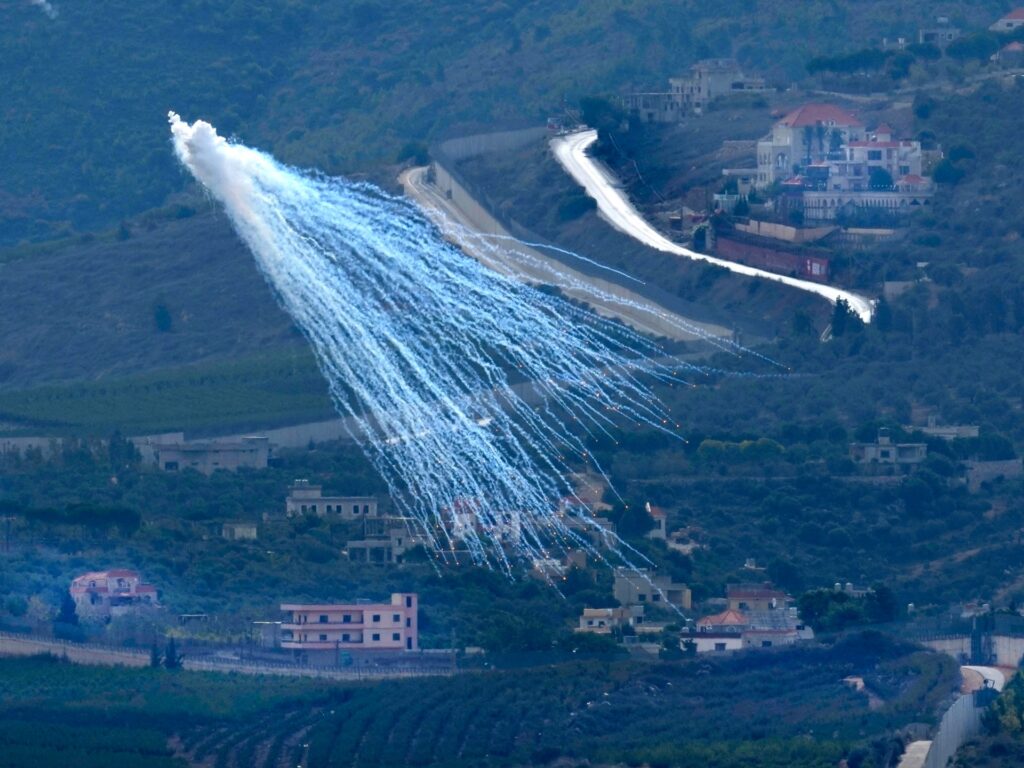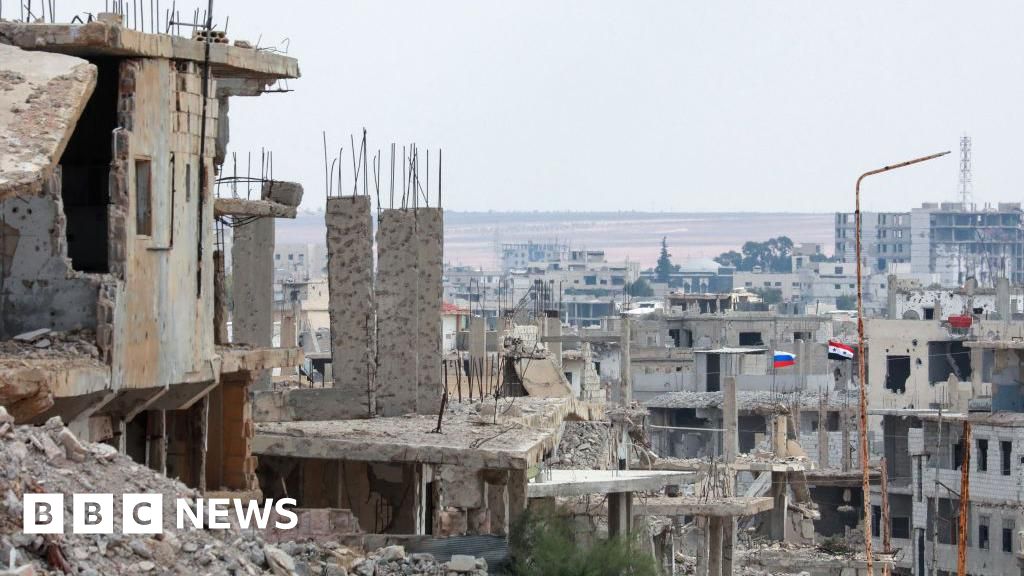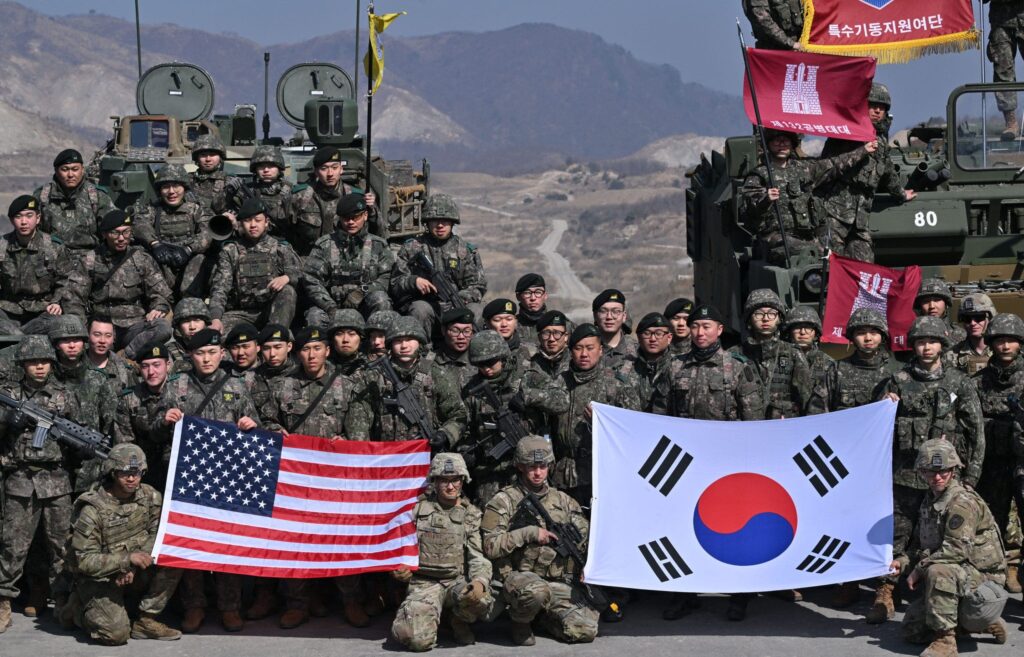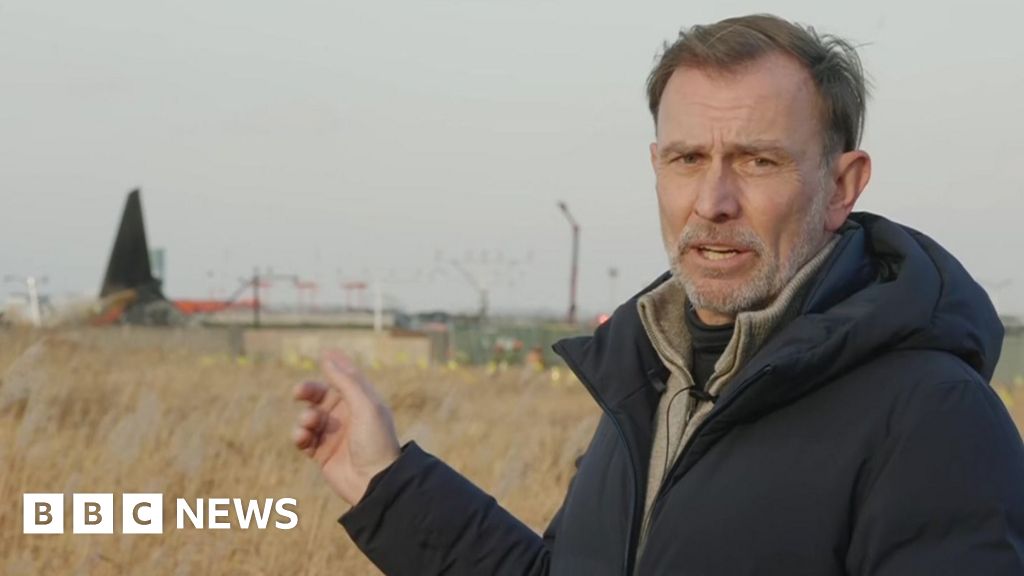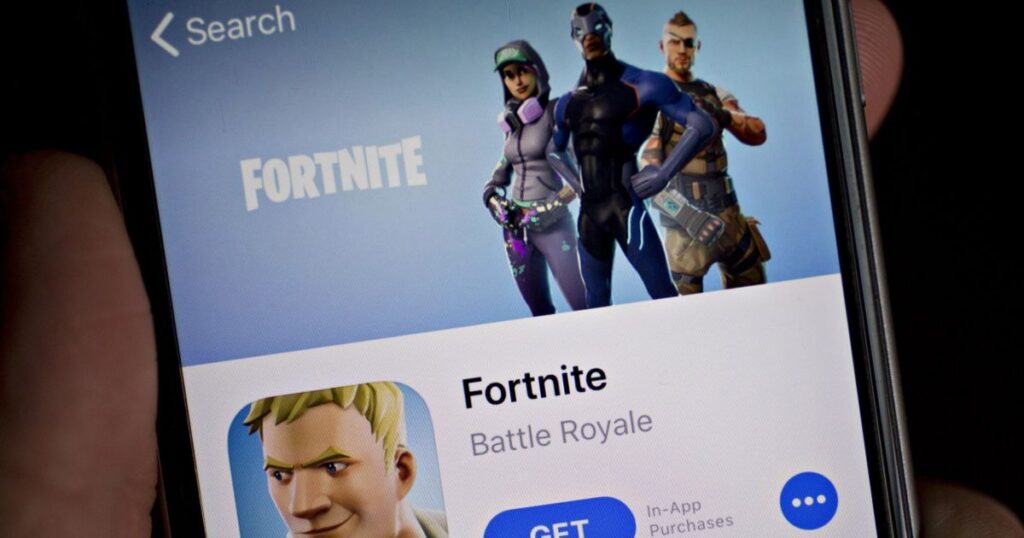]
Beirut, Lebanon – Israel has intensively used white phosphorus on a strip in southern Lebanon that matches a zone its army has marked as a red “no go” zone on maps it distributes to Lebanese people, telling them not to return to their homes there.
In March, Al Jazeera reported experts’ claims that Israel was trying to make the land uninhabitable through tactics, including the use of white phosphorus.
More than 918 hectares (2,268 acres) have been hit in 191 attacks using the controversial munition since October 8, 2023, according to data collected by Lebanese researcher Ahmad Baydoun and environmental activist group Green Southerners.
Israel and the Lebanese group Hezbollah have exchanged attacks since October 8, 2023, a disproportionate exchange – with at least four Israeli attacks for each one from the Lebanese side.
How Israel uses white phosphorus
White phosphorus munitions ignite when exposed to oxygen at temperatures above 30 Celsius (86 Fahrenheit) and rain down streaks of dense white smoke mixed with phosphorus oxides.
The fiery fragments continue to burn – on vegetation, buildings, or right through human flesh – until they are fully oxidised or deprived of oxygen.
Israel claims it uses white phosphorus munitions to create a smokescreen on the battlefield yet rights groups say it has deployed it over populated areas, not battlefields, in both Gaza and Lebanon – which violates international humanitarian law.
“The use of white phosphorus in warzones relies on three pillars,” Hamze Attar, a Luxembourg-based defence analyst, told Al Jazeera.
Those three pillars are: using it as a smoke screen to obscure troop advances; clearing fighters and military equipment from wide open spaces; and a rapid response or preemptive action before or after a rocket launch.
Human Rights Watch found at least five cases as of June 2024 where the munitions “were unlawfully used over populated residential areas”.

Intense bombing in southern Lebanon
“The most intense bombing and systematic eradication of the land cover was indeed in this border area,” Rami Zurayk, Department of Landscape Design and Ecosystem Management chair at the American University of Beirut, said.
Baydoun’s research confirmed that Israel has focused white phosphorus use across southern Lebanon, with a higher intensity in the early months of the conflict.
The first two months of the attacks in 2023 – October (45 white phosphorus shells) and November (44) were the most intense, with 99 out of a total of 199 white phosphorus attacks.
In September 2024, Israel again escalated, killing 3,150 people in a little more than two months.
Independent conflict-monitoring organisation ACLED recorded 4,841 Israeli military actions in southern Lebanon from October 8, 2023, to November 27, 2024, and a further 8,209 in Nabatieh, both above and below the Litani.
Last Wednesday, a ceasefire negotiated by France and the United States came into effect. Elated, thousands of displaced people were heading back to their villages in the south within hours.
But a day after the ceasefire was announced, Israel released its map with the red “off limits” zone.
“You are prohibited at this stage from returning to your homes from this line south until further notice,” the Israeli army’s Arabic-language spokesman Avichay Adraee wrote on X, formerly Twitter.
Under the terms of the ceasefire, Israel must withdraw its troops from southern Lebanon in 60 days to make way for the Lebanese army which will deploy to the south. The Israeli army is still in this area.
Bounded by the Litani River to the north, which is 6km (3.7 miles) from the border at its closest point and 28km (17 miles) at its furthest, and the Blue Line demarcation with Israel, this area is also to be cleared of Hezbollah and its military infrastructure.
Public Works Studio, an urban planning and policymaking studio in Lebanon, also published online a series of maps that document Israel’s destruction of southern Lebanon, including where white phosphorus was used.
“Most of the areas affected by phosphorus are included in the strip that Avichae mentioned is off-limits for southerners to return to,” a researcher at Public Works Studio, who requested anonymity, told Al Jazeera.

Baydoun noted that the damage is extensive to this area Israel seemingly wants as a buffer zone.
“This is beyond a scorched earth policy because the consequences are invisible and long-term, and nature cannot regenerate itself,” Baydoun said. “There needs to be … effort to decontaminate.”
Buffer zone
The southern area is now under Israeli control as the terms of the ceasefire, which stipulates Israel will withdraw its forces behind the Blue Line within 60 days, are put into place.
“Nothing on earth will stop the residents of these [Lebanese] border villages from going back, so I think the Israelis are buying time and doing more damage and [searching] for Hezbollah infrastructure within this buffer zone,” Nicholas Blanford, a Lebanon expert with the Atlantic Council think tank said.
“It is probably not a coincidence that the area where Israelis restricted people from entering conforms almost identically to their former occupation zone in the 1980s and 1990s,” Blanford told Al Jazeera.

However, Blanford said, he did not believe the Israelis would stay in that zone beyond the 60 days, as any long-term occupation would lead to a renewed resistance from Hezbollah.
Still, Israel’s goal of creating a buffer zone, including through the use of white phosphorus, may be achieved.
It has already destroyed hundreds of hectares of land, including tens of thousands of olive trees, and has now reportedly moved on to demolishing buildings in those towns as well.
